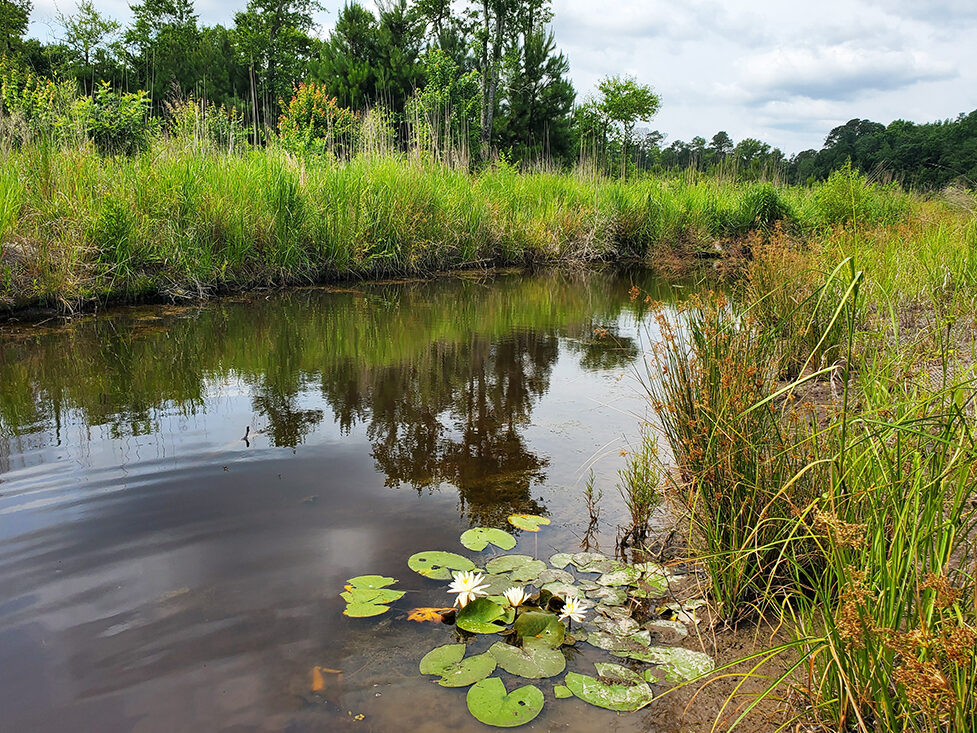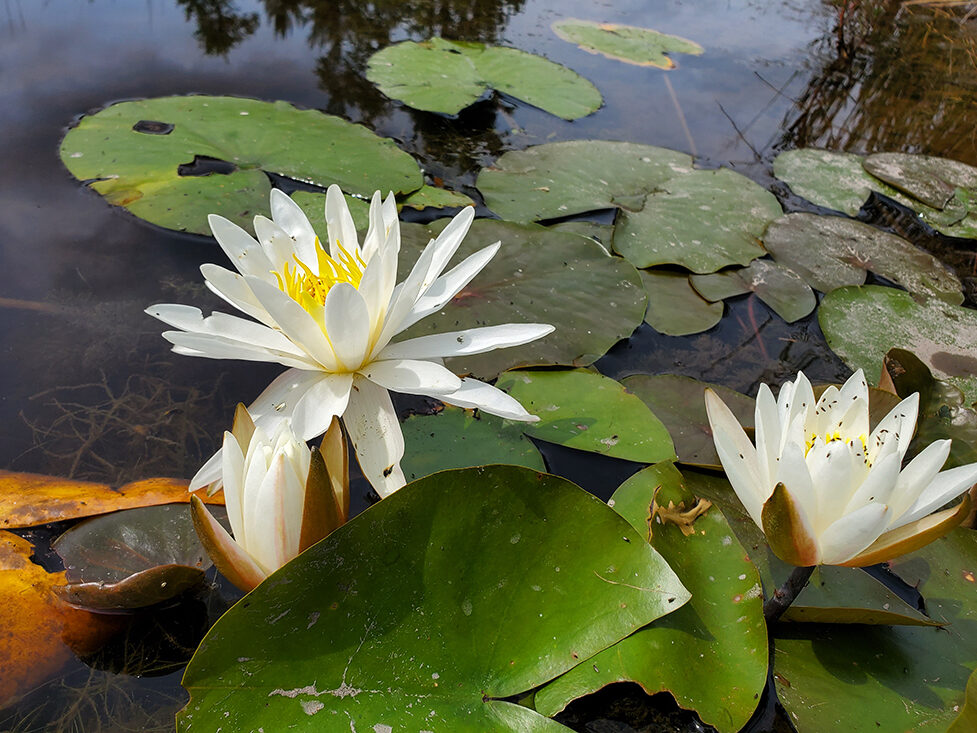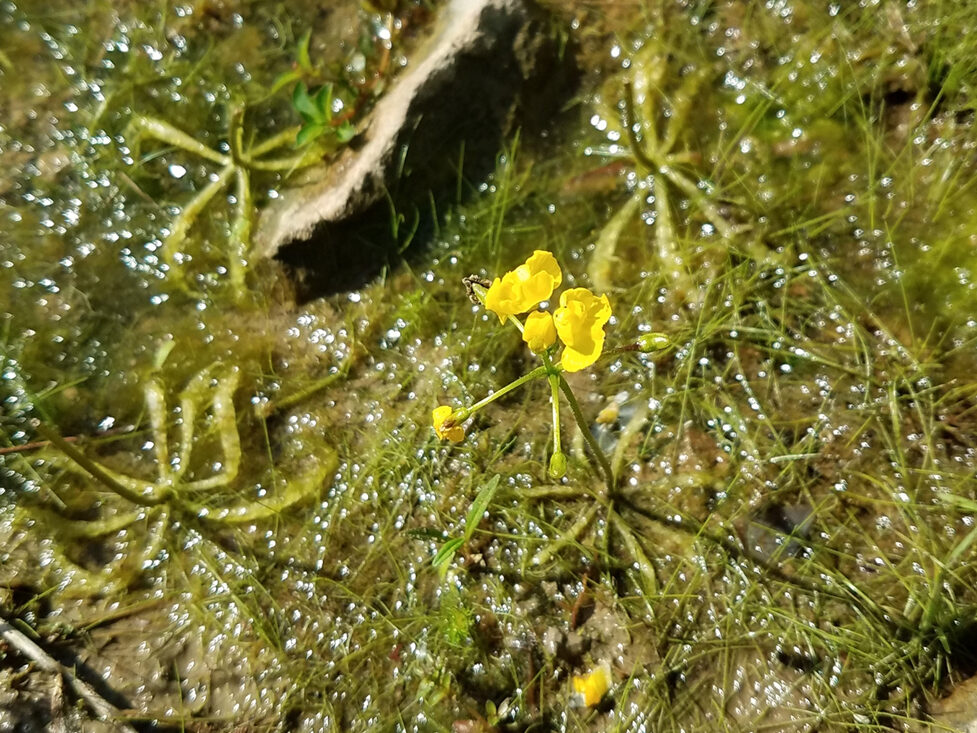From the Stewardship Corner: Adaptations of Aquatic Plants
What’s so special about aquatic plants? They provide vertical structure and habitat for animals in water systems, as well as trap sediments, slow the velocity of water, and even absorb pollutants such as heavy metals and nutrient run-off. Aquatic plants, aka hydrophytes, have several unique adaptations to help them survive in the water. Photos 1: Baldcypress (Taxodium distichum) at Falling Creek Mitigation Site, North Carolina; Photo 2: Soft-stemmed bulrush (Schoenoplectus tabernaemontani) at Marylea Farm Mitigation Site, Maryland
Emergent plants are rooted in water and partially grow above the water surface. Broadleaf watermilfoil has two shapes of leaves. The above-water leaves are triangular, bright green, and produce axillary flowers. The filamentous form of the submerged leaves are excellent at catching fine sediment and they bear a reproductive structure called a turion. Photo 3 & 4: Broadleaf watermilfoil (Myriophyllum heterophyllum) at Dudley Mill Pond Mitigation Site, North Carolina
Submerged plants are rooted into aquatic substrate or without a root system. They regrow from buds below the water surface. Spongy tissues provide structure and buoyancy while in the water. A submerged aquatic plant quickly becomes limp outside of water. Quick tip: if you’re trying to identify an aquatic plant, it helps to keep it in a dish of water.
Floating-leaved plants are rooted into aquatic substrate with leaves that float on the water surface. The American white water-lily (Nymphea odorata) leaves are covered by a waxy cuticle that repels water. This prevents the leaves from rotting. Photo 5 & 6: American Water-Lily (Nymphaea odorata) at Dudley Mill Pond Mitigation Site, North Carolina
Free-floating plants are found suspended on water surface with no roots attached. Swollen bladderwort (Utricularia inflata) has a whorl of leaf structures called “rafts” that look and float like pool noodles! Photo 7: Swollen bladderwort at Dudley Mill Pond Mitigation Site, North Carolina









